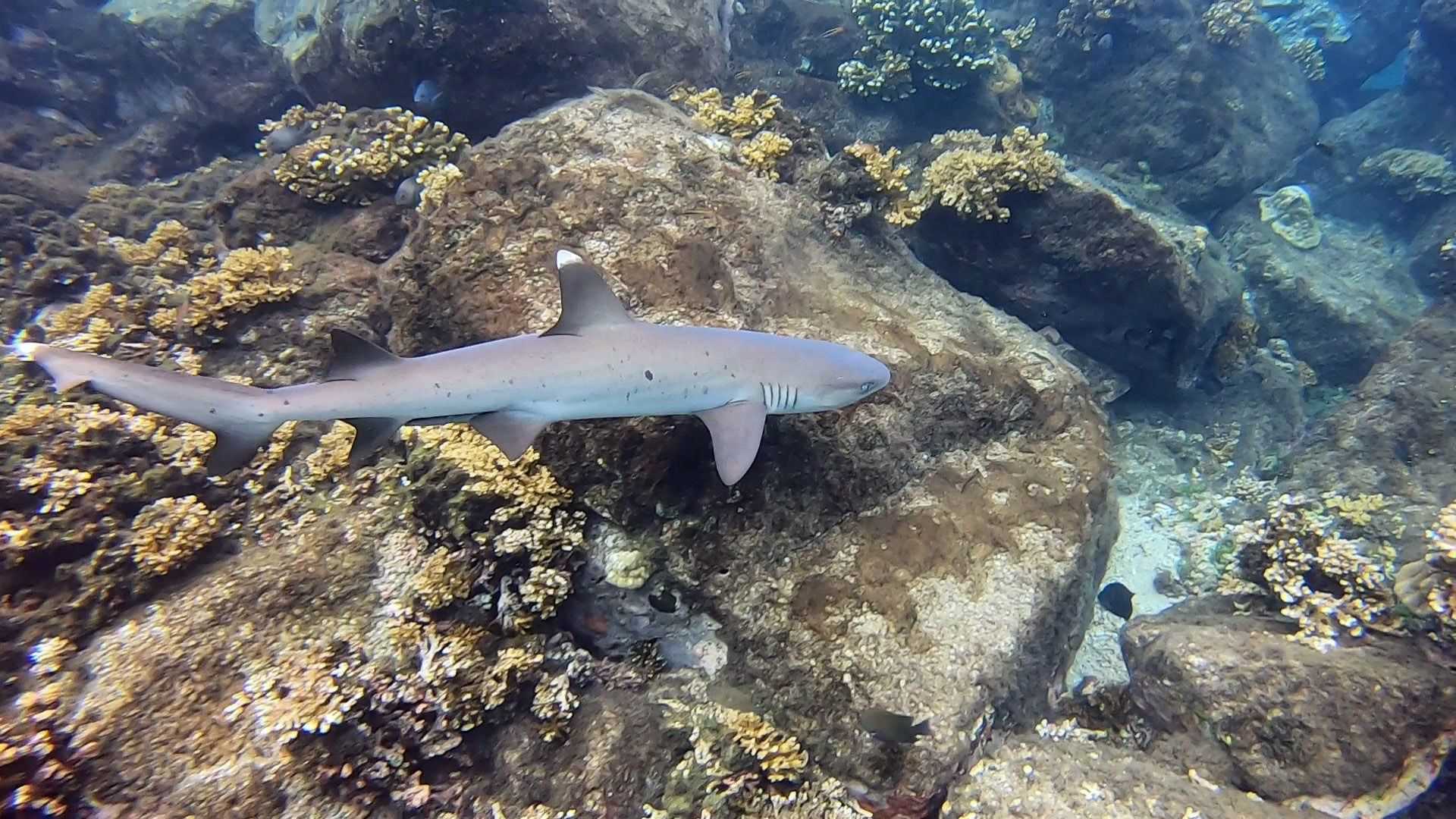National Geographic Quest cruised during the night after visiting Isla Iguana. Very early in the morning, we heard the anchor drop to the bottom of the ocean. We had finally arrived at our morning destination, Coiba National Park.
Right after breakfast, we disembarked to explore the ranger station. There were different species of birds singing all through the station. After doing a little bit of birding, many of us decided to test our strength by kayaking along the boundaries of the park. Others enjoyed the chance to paddleboard.
Another group of guests visited a lovely little islet called Cocos. While snorkeling, guests enjoyed good sightings of whitetip reef sharks, hawksbill turtles and various juvenile fish. It was a great treat to learn about life in the coral reef.
We wanted to stay on the lovely white sand beach, but we needed to weigh anchor. More adventures are waiting for us in Costa Rica.







